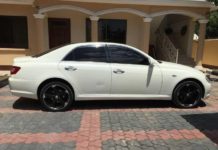A combination of factors has conspired to deny Dar-es-salaam port in Tanzania business to competing ports in east and southern Africa. The factors include poor infrastructure and bureaucracy at the facility, value added tax levied on transit goods, regulations on permitted tonnage on roads and political meddling.
The effect of these bottlenecks is that importers preference for Mombasa, Beira and Durban ports. In the first two months of this year, the port lost 36.4 per cent of import business from Uganda, Malawi, Zambia and DR Congo. Zambia, the largest transit user of the Dar-es-salaam port moved 1.9 million tonnes of cargo through the port last year.
This was 34 per cent of the country’s total traffic of 5.6 million tonnes a year. Tanzania Ports Authority Marketing Director Francisca Muindi confirmed the Dar port is facing cut throat competition from other facilities in southern Africa.
“There is urgent need to strengthen the railway infrastructure to win back business. Drastic changes need to be made to attract business back into the Port,” she said. Complicating matters for the facility is the weakening of the South African Rand against the US dollar which has made it cheap for importers to use Durban in South Africa rather Dar-Es- Salaam.”
In addition, infrastructure needs to be improved both inside and outside the facility. The roads leading out of the port need to be expanded to dual carriage to ease congestion. Tanzanian importers in the North of the country — mostly fromTanga, Arusha and Usangi — have shifted to the port of Mombasa.
This move has seen imports through Mombasa rise pushing the quantity cargo through Mombasa to 204,000 tonnes last year, up from 187,000 tonnes in 2014. Copper exports, which form the bulk of exports from Zambia, through the port declined 65 per cent due to a Tanroads regulation which barred the use of link-trailers on Tanzanian roads.
Most copper exporters prefer link-trailers to transport copper. The Dar facility has lost 78 per cent of Uganda business and 36 per cent of Malawi business. Malawi decided to use Beira Port, which is connected by a standard gauge railway reducing transit time to two days which makes it cheaper compared to the Dar route.
Dar port data showed that Zambia vehicle imports through the facility have dropped by 55.4 per cent from 6,042 cars between January and February last year to 2,692 cars compared to the same period this year.
Imported vehicles to DR Congo have gone down by 50 per cent to 1,247 units in the first two months of this year compared to 2015. Dar-es- Salaam is East Africa’s second largest Port after Mombasa. The port handles containers equivalent to 600,000 twenty-foot equivalent units (TEUs) annually compared to Mombasa’s 1.1 million.
- By Musyoka wa Kyendo @PeopleDailyKE







![Top 20 Used Cars to Avoid in Kenya [PHOTOS]](../../../blog/wp-content/uploads/2013/11/nissan-370z.jpg)

